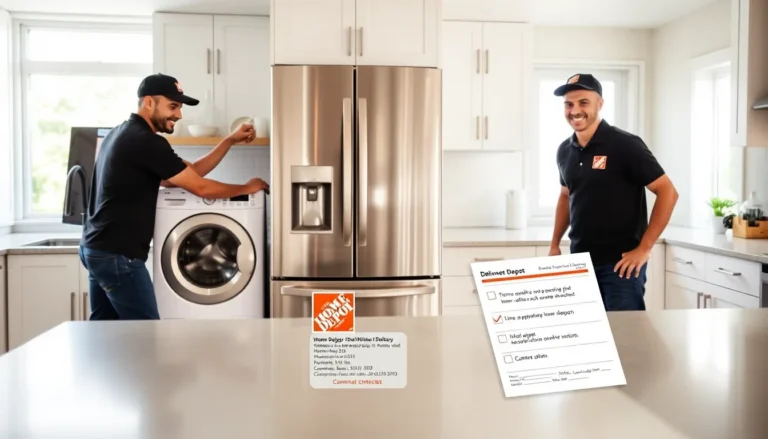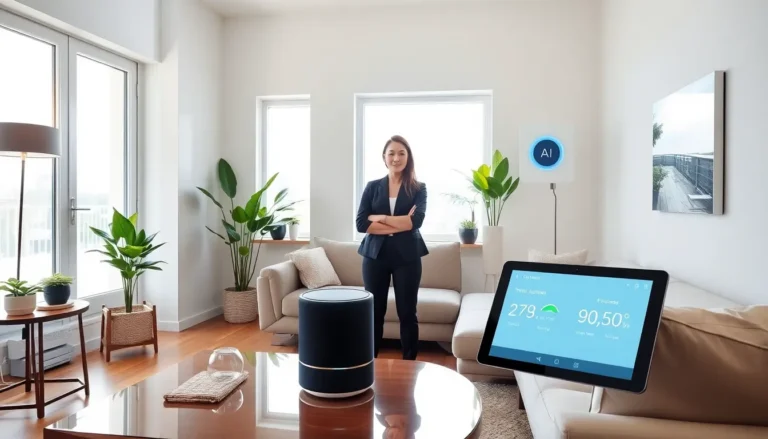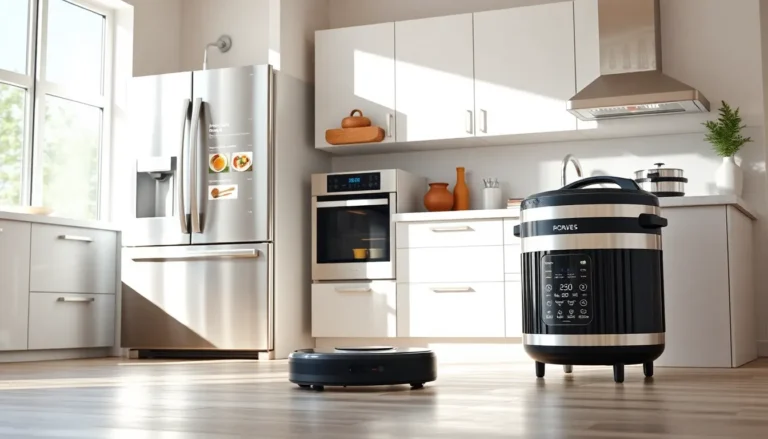When the washing machine decides to unleash its inner waterfall, it’s great to know someone has your back. Home insurance on appliances may not sound as thrilling as an action movie, but it’s essential for a smooth-sailing household. After all, nobody wants to play the blame game with their appliances, right? This article dives deep into the often-misunderstood world of home insurance coverage, specifically tailored to keep your machines, and your wallet, safe from unexpected disasters.
Table of Contents
ToggleUnderstanding Home Insurance Coverage

Home insurance is a safety net for homeowners, but its specifics can often seem as complicated as assembling IKEA furniture without the instructions. Typically, home insurance covers the structure of the house and personal property, but individual policies can vary, particularly concerning appliances.
Coverages can be broadly categorized into dwelling coverage, personal property coverage, and liability coverage. Appliances often fall under personal property, ensuring they’re protected against certain risks. But, coverage isn’t a one-size-fits-all. Homeowners should carefully read their policies to grasp exactly what’s included.
Most policies provide protection against risks like fire, burst pipes, vandalism, and theft. But it’s vital to remember that not all disasters are created equal, some policies have limitations and exclusions that can leave certain appliances high and dry.
In essence, understanding the nuances of home insurance can help homeowners avoid surprises when a disaster strikes. Staying informed keeps your mind at ease and your appliances chugging along.
What Appliances Are Typically Covered
When it comes to home insurance, not all appliances are treated equally. Most policies generally cover major appliances such as refrigerators, washing machines, dryers, and dishwashers, but there’s more to the story.
Major home systems, including HVAC units and water heaters, also typically enjoy coverage as part of the package. But, smaller appliances like microwaves and toasters often fall into a gray area. Depending on the policy, they might be excluded unless specified. It’s like finding out your favorite pizza toppings cost extra, disappointing and sometimes shocking.
Homeowners should review their policy carefully to identify which appliances are explicitly covered. In some cases, owners may need to add additional endorsements or riders for specialized equipment, particularly high-end or commercial-grade appliances.
In short, while many people assume their appliances are already covered, a quick policy review can save homeowners from unexpected headaches down the line.
Factors Influencing Appliance Coverage
Several factors influence how appliances are covered under home insurance, and understanding them can guide homeowners in selecting the best policy.
First, the age of an appliance matters. Newer devices typically have longer lifespans and may be easier to insure. Insurers often favor appliances with modern energy efficiency ratings because they signal reliability. Older appliances may face higher premiums due to their propensity for issues.
Another factor is the installed value: high-end appliances or luxury brands may require additional coverage to ensure they’re fully protected. Homeowners should also consider local risks, living in an area prone to flooding or earthquakes could necessitate special considerations.
Finally, the history of claims plays a role as well. A homeowner with several appliance-related claims in the past may face higher premiums or limited coverage options. Knowing these factors can help homeowners tailor their policies effectively.
How to File a Claim for Appliance Damage
Filing a claim for appliance damage is a straightforward process, but that doesn’t make it any less nerve-wracking when the time comes. The first step involves promptly notifying the insurance company about the damage. Most policies have a specific time frame in which a claim must be reported, so acting fast is crucial.
Next, gather documentation and evidence of the damage. Photos of the appliance, purchase receipts, and any relevant repair estimates will strengthen the claim. Think of it as collecting evidence in a detective story, everything has to line up.
Once the necessary information is in hand, fill out the claim form provided by the insurer. Clarity is key here because incomplete or vague information may delay the claim process. After submission, the insurance company will likely send an adjuster to assess the situation directly.
Finally, keep a record of all communication. The more organized a homeowner is, the smoother the process will go, turning a potential headache into an efficient experience.
Tips for Maximizing Your Appliance Coverage
Maximizing appliance coverage can often mean the difference between a minor inconvenience and a major headache. Here are some helpful tips to ensure homeowners are getting the most out of their home insurance.
Start by regularly reviewing your policy. As life changes, whether it’s acquiring new appliances or renovations, your insurance needs may change too. Adjusting coverage can save money and ensure all major appliances are included.
Consider adding endorsements for high-value appliances to ensure they’re fully protected. This step is particularly important if the appliance is costly to repair or replace. Also, maintaining kitchen and laundry appliances can also positively impact coverage. Regular maintenance, such as cleaning filters or scheduling professional check-ups, can prove beneficial down the line.
Finally, being proactive can pay off. Engage with your insurance agent to discuss coverage options and strategies tailored to meet individual needs. A little effort can go a long way in maximizing insurance benefits.
Common Exclusions in Appliance Coverage
Even the best home insurance policies come with their fair share of exclusions. It’s essential for homeowners to be aware of which appliances or situations might not be covered under their policies.
Common exclusions include wear and tear, which is not considered sudden damage but rather a gradual decline. Appliances that break due to age or lack of maintenance often fall into this category, leaving homeowners with unexpected repair bills.
Also, damages resulting from extreme weather, such as flooding or earthquakes, may not be included unless the homeowner has added specific coverage for those events. Even plumbing issues that lead to appliance damage can sometimes cause coverage disputes.
Eventually, being aware of these exclusions helps homeowners manage their expectations and prepare for unexpected financial responsibilities.





